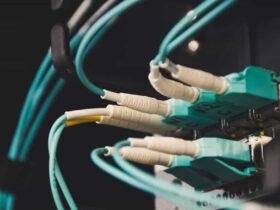In the digital age, the convenience and flexibility of wireless peripherals have become increasingly essential. Among these, wireless keyboards stand out for their ability to reduce clutter and provide mobility. Dell, a renowned brand in the computing world, offers a range of wireless keyboards catering to diverse needs, from casual use to professional gaming. This article aims to guide users through the process of connecting a Dell wireless keyboard to their computer. Whether it’s via a USB receiver or Bluetooth, the steps involved can vary slightly but are generally straightforward. We will cover everything from unboxing your new keyboard to troubleshooting common issues, ensuring a seamless setup experience.
How To Connect A Dell Wireless Keyboard?
Connecting a Dell wireless keyboard to your computer involves a few simple steps. Whether your keyboard uses a USB receiver or Bluetooth, the process is user-friendly. Here’s a general guide on how to do it:
1. If Your Keyboard Uses A USB Receiver
- Unbox The Keyboard: Open the packaging and ensure you have the Dell wireless keyboard and the USB receiver.
- Insert Batteries: If the keyboard isn’t already powered, open the battery compartment, usually located on the back or underside of the keyboard, and insert the recommended type of battery.
- Plug In The USB Receiver: Locate a free USB port on your computer and plug in the USB receiver. It’s advisable to use a port directly on your computer rather than a USB hub for the best connection.
- Wait For Your Computer To Recognize The Keyboard: Once the USB receiver is plugged in, your computer should automatically detect the keyboard. If you are using a Windows PC, you might see a notification that a new device is being set up. On a Mac, it will just be ready to use.
- Test The Keyboard: Type something to ensure the keyboard is working. If it’s not responding, try restarting your computer with the USB receiver plugged in.
2. If Your Keyboard Uses Bluetooth
- Turn On Bluetooth On Your Computer: Go to the Bluetooth settings on your computer. On Windows, you can find this in the Settings app under ‘Devices’. On a Mac, it’s in the System Preferences under ‘Bluetooth’.
- Put The Keyboard In Pairing Mode: Turn on your Dell wireless keyboard and put it in pairing mode. This usually involves pressing and holding a specific key or combination of keys. Refer to your keyboard’s manual for the exact method.
- Pair The Keyboard With Your Computer: On your computer’s Bluetooth settings, look for your keyboard listed among the available devices and select it. Follow any on-screen instructions to complete the pairing process.
- Test The Keyboard: Once paired, type something to confirm the keyboard is connected and working correctly.
Maintenance And Care
Maintaining and caring for your Dell wireless keyboard is crucial for ensuring its longevity and optimal performance. Here are some key tips for maintenance and care:
Cleaning And Caring For Your Keyboard
- Regular Cleaning: Dust and debris can accumulate between the keys over time. Use a can of compressed air or a small, soft-bristled brush to gently remove dirt and dust. Do this regularly to prevent buildup.
- Wiping Down The Surface: Use a soft, lint-free cloth slightly dampened with water or isopropyl alcohol to wipe the keys and the keyboard’s surface. Avoid using harsh chemicals or abrasive materials that can damage the key surfaces.
- Key Removal For Deep Cleaning (If Applicable): If your keyboard model allows for key removal, carefully pop off the keys for deeper cleaning. This should be done sparingly to avoid damaging the keys or the mechanism underneath. Check the user manual to see if this is recommended for your model.
- Avoid Liquid Spills: Keep liquids away from your keyboard to prevent spills. If a spill occurs, turn off and disconnect the keyboard immediately. Remove batteries if possible, and let it dry completely before using it again.
Battery Management
- Monitoring Battery Life: Be aware of your keyboard’s battery level. Some models have an indicator light for low battery, or you can check the battery status in your computer’s settings if it’s Bluetooth-connected.
- Using Quality Batteries: Invest in good-quality batteries for longer life and better performance. Consider rechargeable batteries for an eco-friendly option.
- Changing Batteries Promptly: Replace batteries as soon as you notice a drop in performance. Delayed replacement can lead to battery leakage and damage to the keyboard.
- Removing Batteries During Long Periods Of Non-Use: If you’re not going to use the keyboard for an extended period, remove the batteries to prevent leakage.
General Tips
- Proper Storage: When not in use, store the keyboard in a clean, dry place away from direct sunlight and extreme temperatures.
- Handling With Care: Avoid dropping or exerting too much pressure on the keyboard as it can damage the internal components.
- Firmware Updates: Periodically check for firmware updates (if applicable), which can often enhance performance and add new features.
- Consult The Manual For Specific Care Tips: Refer to the user manual for any specific care instructions related to your Dell wireless keyboard model.
Advanced Tips And Tricks For Dell Wireless Keyboards
- Key Customization: Use Dell’s software or third-party applications to remap keys to perform different functions or to create shortcuts.
- Adjusting Key Repeat Rate: In your computer’s settings, adjust the key repeat rate and delay to suit your typing style. Faster rates can increase typing speed and efficiency.
- Learning Built-In Shortcuts: Familiarize yourself with the built-in shortcuts of your operating system that can be used with your keyboard. These can significantly speed up your workflow.
- Creating Custom Shortcuts: If your Dell keyboard comes with software, use it to create custom shortcuts for frequently used applications or commands.
- Understanding Dual-Function Keys: Many Dell keyboards have dual-function F-keys which can perform different actions when combined with the Fn key.
- Changing Function Key Behavior: In some cases, you can toggle the primary behavior of function keys (multimedia vs. F1-F12) in the BIOS or UEFI settings of your computer or through Dell’s software.
- Resolving Unresponsive Keys: If certain keys become unresponsive, check for physical obstructions, or try resetting the keyboard.
- Handling Signal Interference: Reduce interference by removing other wireless devices from the vicinity or changing the position of your keyboard’s receiver.
- Regular Firmware Updates: Keep the keyboard’s firmware updated through Dell’s support website to ensure optimal performance and security.
- Use Of Accessibility Options: Many operating systems offer accessibility features that can be used with your keyboard to improve usability for users with specific needs.
Conclusion
In conclusion, connecting and effectively utilizing a Dell wireless keyboard is a straightforward process, whether it’s through a USB receiver or Bluetooth. By following the outlined steps and embracing the maintenance and advanced usage tips provided, users can ensure a seamless experience. Remember, regular care and exploring the keyboard’s full range of features can greatly enhance your typing efficiency and overall computer interaction. For any persisting issues or specific queries, don’t hesitate to consult Dell’s customer support for expert guidance.
FAQ’s
How Do I Connect My Dell Wireless Keyboard To My Computer?
Use the USB receiver or Bluetooth. For USB, plug the receiver into your computer and wait for automatic recognition. For Bluetooth, enable pairing mode on the keyboard and connect through your computer’s Bluetooth settings.
What Should I Do If My Dell Wireless Keyboard Is Not Working?
Check battery life, ensure the USB receiver is properly connected or the Bluetooth pairing is active, restart your computer, and try the keyboard within its effective range. If issues persist, consult the user manual or Dell support.
Can I Use My Dell Wireless Keyboard With Different Operating Systems?
Yes, Dell wireless keyboards are generally compatible with various operating systems like Windows and macOS. However, some specific functions may vary between systems.
How Often Should I Replace The Batteries In My Dell Wireless Keyboard?
This depends on usage, but typically, batteries should be replaced or recharged when you notice a drop in performance or receive a low battery notification.
Is It Possible To Reprogram Keys On A Dell Wireless Keyboard?
Yes, if your keyboard model supports key customization, you can use Dell’s software or third-party applications to reassign key functions or create shortcuts.

























Leave a Reply